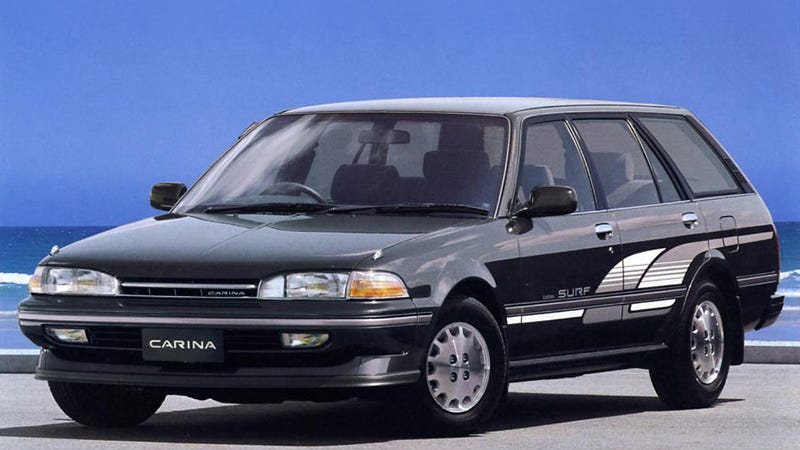
I assumed on some level that car engineers think about everything when assembling a car, even things like the proper place at which the ignition switch should start to turn. And yet! It’s fascinating to actually see it in action, like on the 1988 Toyota Carina, which was the focus of Toyota engineers’ ever-loving, intense gaze.
Toyota posted a trove of old press materials to its media site some years ago, even publishing a press release in 2015 with the hilarious headline, “NOT FOR PUBLICATION – TOYOTA MEDIA WEBSITE: ARCHIVE RESOURCES NOW AVAILABLE.”
It said in part:
Looking for Supra Turbo performance data? Need an image of a sixth generation Celica? Trying to find out more about Carina E? The answers to these questions and more are now just a couple of clicks away with the addition of a wealth of new archive resources on the Toyota media website.
I mean who isn’t constantly looking for Supra Turbo performance data?!
Today, though, I was hungry for some Toyota Carina information, digging up the press notes for its fifth-generation launch, pretty much at random. What I found was a fascinating document of its time, when Toyota was being peak Toyota, and engineering the crap out of everything.
Advertisement
(Full Disclosure: We hear at Jalopnik do not ordinarily comply with pre-release information embargoes, but, after a long talk with our lawyers, I’m comfortable abiding by this one. The embargo expired on March 30, 1988.)
So what did automotive journalists get back then? Fifty-two pages of detail, to be exact, describing everything from the Carina’s motor to its ignition switch. Back then, the Carina—sort of a four-door version of the Celica—was Toyota’s second-largest seller in the UK, behind the Corolla. (The Carina, sadly, never made it to the U.S., though, we definitely could’ve used its “Exciting Version.”)
Anyway. Toyota put a lot of thought into this car. A lot! And while we’re used to seeing the details of a new model’s physical parts—its fancy new suspension; its motor, which has been improved in some incremental way; the stiffness of its metals—we don’t usually see interior talked about in this level of detail.
Advertisement
Here’s Toyota, for example, explaining how it improved the car’s dashboard (using the Italian term “facia panel.”)
And here’s their decisionmaking on the ignition switch, which might be my favorite.
Advertisement
All of this engineering was not coming from nowhere. Toyota tested even the smallest things to an extreme degree.
Advertisement
And here’s their thinking on the instrument panel. I, too, hate to stretch!
Remember that this was press notes intended for journalists, meaning that Toyota actually thought journalists need this much information to understand the 1988 Toyota Carina. I’m not complaining, because specific, detailed information can be hard to come by from the manufacturers sometimes, though I still pity the team of hard-working PR people who slaved over this copy. It’s a lot of work, in other words, for something the majority of journalists probably never read. Still, their toil then is our treasure now.
Advertisement
Toyota also had Europe very much in mind, since given the size of the market. The car itself was first formed in clay.
What ended up under the hood? A 1.6 liter four-cylinder or a 2.0-liter four-cylinder for the Executive trim level. It’s fair to say Toyota spent some time on the valves.
Advertisement
If you want to go even deeper, you can check out the whole thing here.













